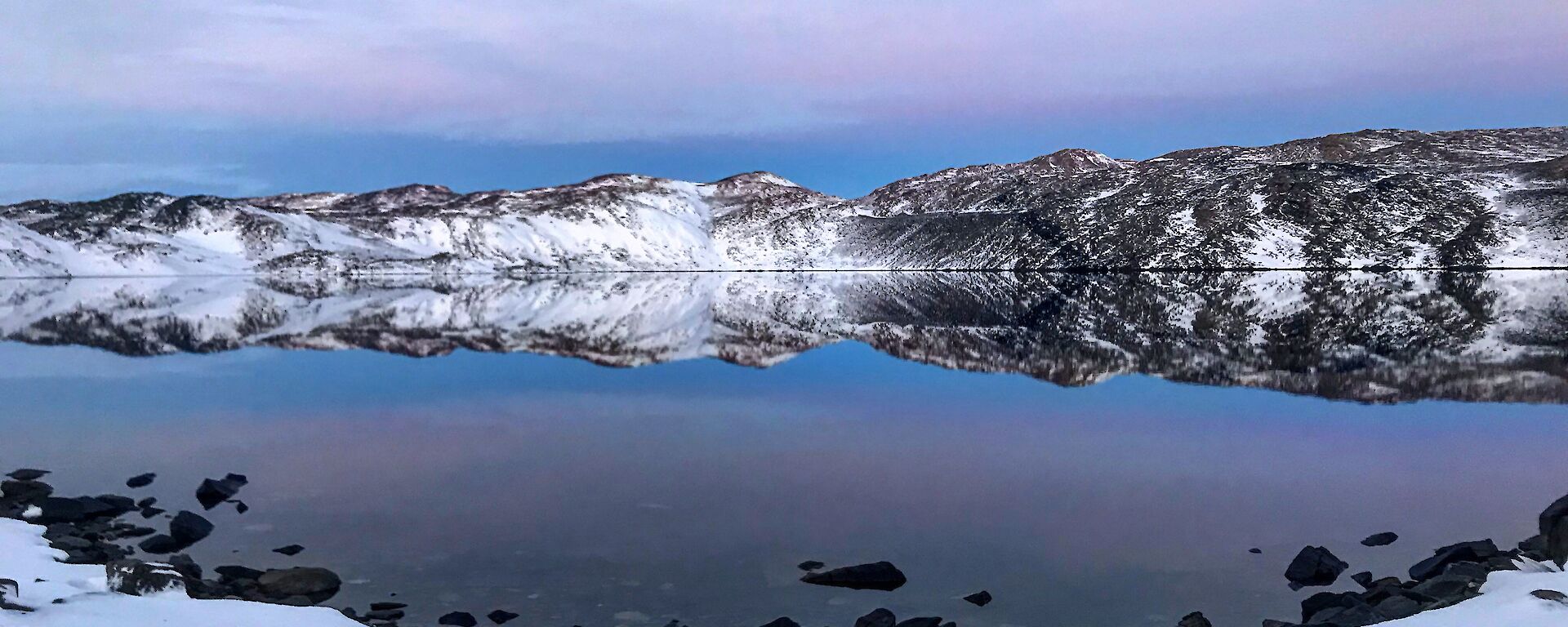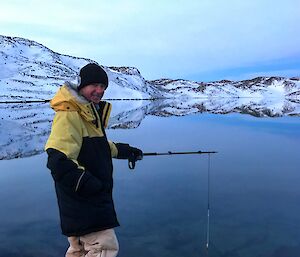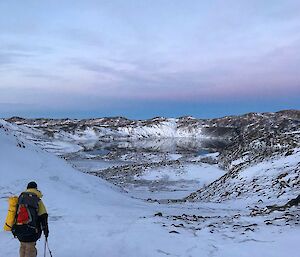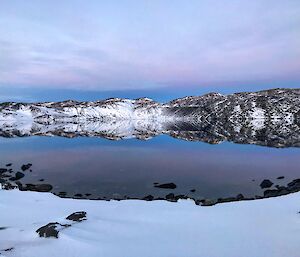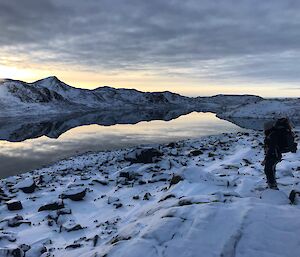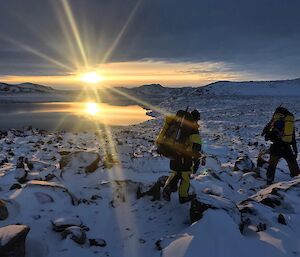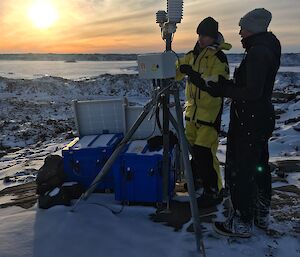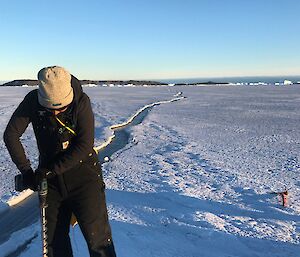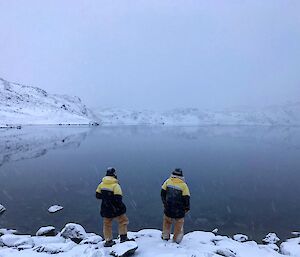Every month here at Davis, as well as doing our normal roles, we have a wide range of other jobs to do. One of the fun things we get to do is help support the field science. This could be anything from measuring the thickness of the sea ice, to counting seals for a seal survey. Whatever the task is, they are always good value and a great excuse to get out and experience a bit of Antarctica. Here’s a brief description of some of the science jobs I (Joe) have been lucky enough to be involved with.
Sea ice measurements are a weekly task. We drill through the sea ice using a metre-long 50mm drill bit, then drop a measuring tape down to measure the thickness of the sea ice. If the ice is thicker than 1m we need to attach an extension to the drill bit, making it 2m in length — tricky to handle. At its peak, our sea ice can grow to more than 1.8m in thickness. We also measure snow cover on top of the ice and the freeboard. The freeboard is the distance between the water in the hole and the top of the sea ice. This data is sent back to the University of Tasmania to aid with their research. The data also helps us to monitor the state of the sea ice for operational needs such as sea ice travel and resupply.
Air quality sampling is a monthly job, taking samples at four sites: One on station (nice and close), one at Adam’s Flat, another at The Ridge (Hägg ride and hike) with the fourth and final one near Deep Lake (quad ride, hike and overnighter!). We set up a small vacuum pump which draws air into a sample chamber which is left overnight and collected the next day. The filter in the sample chamber is weighed before and after the test…down to 10,000th of a gram! Any increase in weight indicates the filter has captured dust particles, which are stored for analysis. This data all forms part of the extensive environmental monitoring activity behind the Australian Antarctic Division’s year-round aviation project.
One of the jobs I have had the most involvement with, and that’s probably my favourite, is the Deep Lake observations. Every month we measure the depth, water/air temperature and cloud cover and other observations. Deep Lake is the lowest land point in Antarctica with its surface 51m below sea level. With nearly 10 times the salinity of ocean water, Deep Lake is ‘hypersaline’ which means it does not freeze, even in the sub-zero temperatures of the Antarctic winter. Last time we measured the temperature of the water it was −13°C and not a crystal of ice to be seen. The Division has been monitoring the lake since 1976 and the water level is used as a ‘state of the environment’ indicator. This is all cool stuff, but the reason why this is my favourite task are the views. When the conditions are right, with zero wind and low light, the reflections on the lake are amazing! The photos I’ve attached really don’t do it justice.
There are a number of other science support jobs including: soil temperature monitoring to assess the vulnerability of the landscape to human impacts, seal surveys — taking particular interest in pupping seals, and maintaining nest cameras as sea birds are known to be useful indicators of fisheries and climate change impacts in the Southern Ocean.
Not a bad life for an electrician.
By Joe

